Hey Prompt Entrepreneur,
This week therefore we’ll be covering how to set up a membership community for your business.
Communities are a powerful way to build engagement with your tribe in a protected space, away from the busyness of social media where you need to compete for attention.
Additionally communities open up exciting revenue opportunities like membership subscriptions. These allow you to provide consistent value to your membership in exchange for a monthly, quarterly or annual payment.
This works well because it allows you to get paid consistently to provide value to the people you want to serve. You aren’t always chasing growth by launching new products and services but can instead focus on working with and helping your community.
We’ll be covering the following topics:
Part 1: Deciding our community’s value
Part 2: Building the tribe
Part 3: Setting up your membership platform
Part 4: Launching and growing your community
Part 5: Monetising your paid community
Let’s get straight into it and talk about how a membership community will fit into your business.
Let’s get started:
Understanding membership communities
1. Visit other communities
Because membership communities are not that well-known of a subject it’s useful to first immerse yourself in other communities.
This is both to help us get an idea of what we can do in our community when it launches…
…as well as being competitive research on what other people are doing in our niche.
Lots of communities will be paid.
I’m not suggesting signing up to lots (unless they are useful!) but instead finding ones with free levels and/or detailed webpages that talk about what’s included.
Let’s find some membership communities using this prompt:
Act as a market researcher
Find 20 membership communities in the [topic] space
Provide name, founder(s), basic details, what's included, strengths and weaknesses, price if available.
Return the results in tabular formatIn the example below I used “copywriting” as the topic. I’ll continue with this niche over the Playbook.
💬 Prompt Output:
Here’s a small snippet of the results.
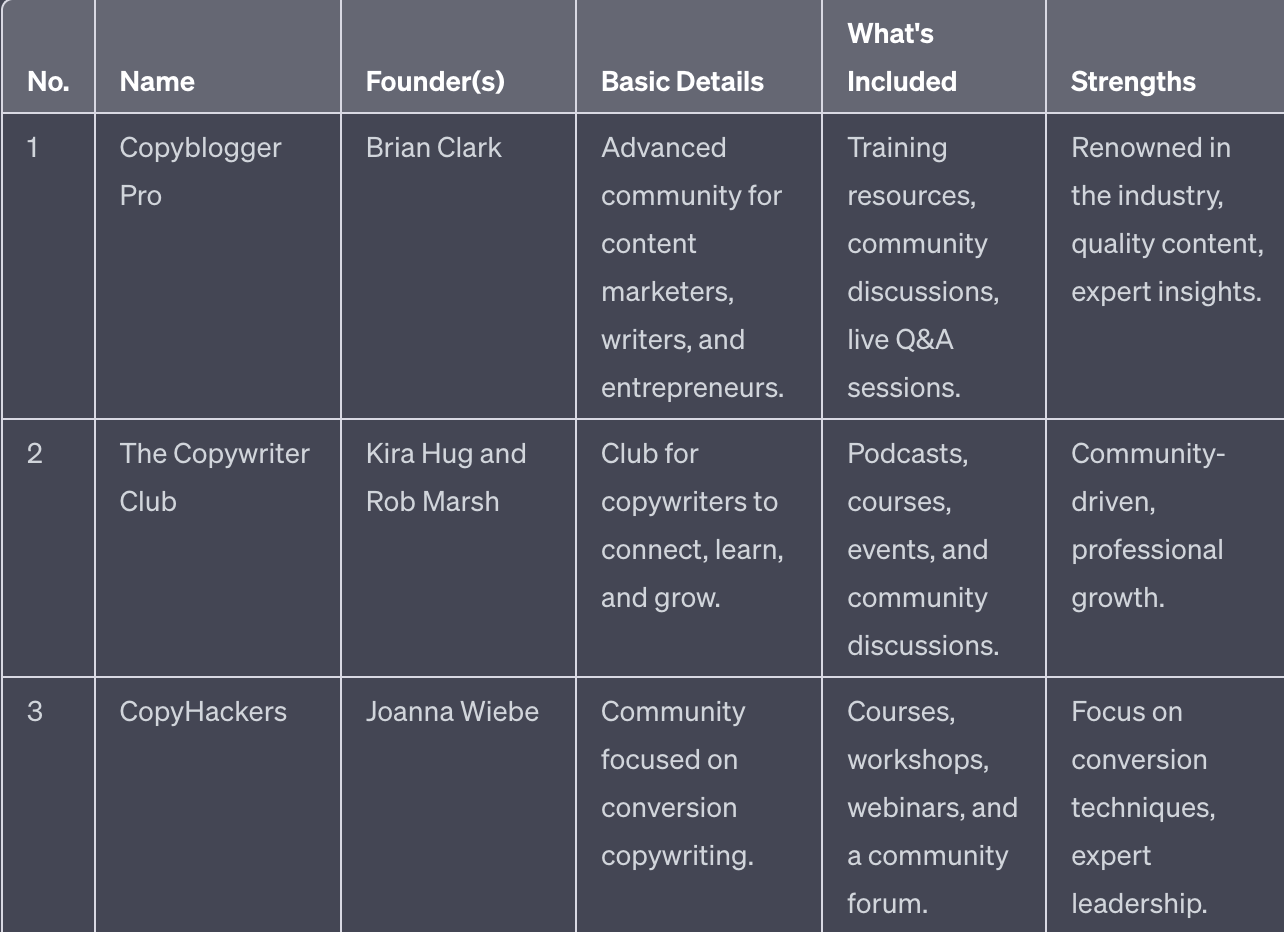
The full results are much more detailed but too much to show here.
Be aware that results will also be affected by the training data cut-off date for ChatGPT. For the most part though this will capture the majority of communities.
Go ahead and visit these communities.
You’ll notice that there’s a broad range of what a community can include.
Copy School for Example is very course focused:
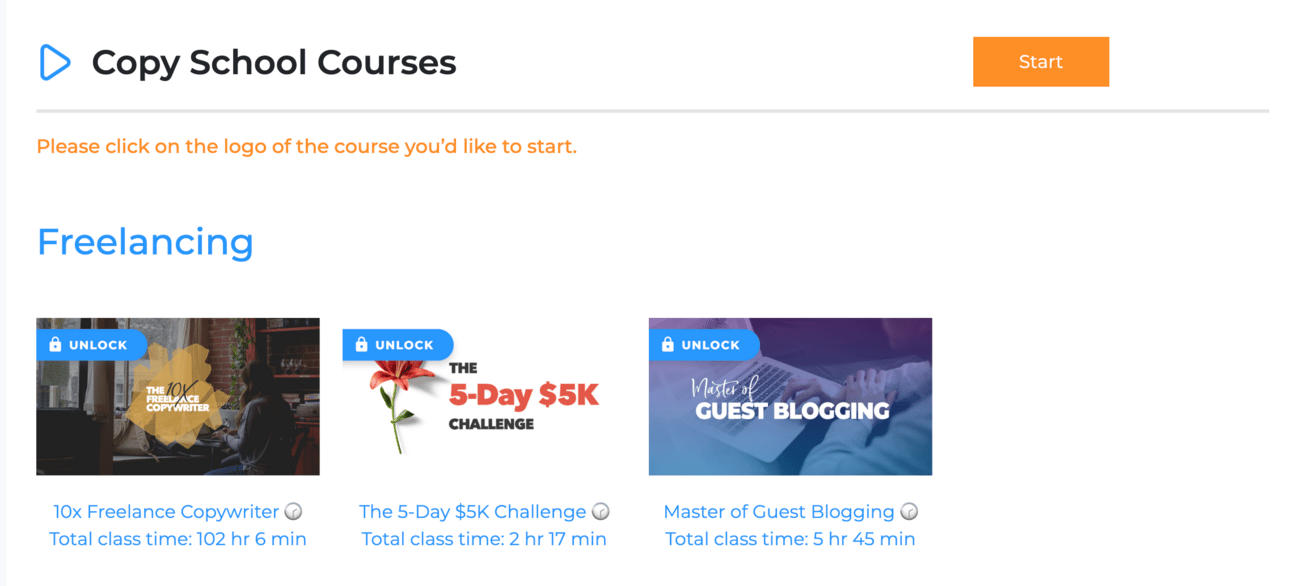
CopyBlogger Pro (Copyblogger Academy) on the other hand is more live Q&A and community focused:
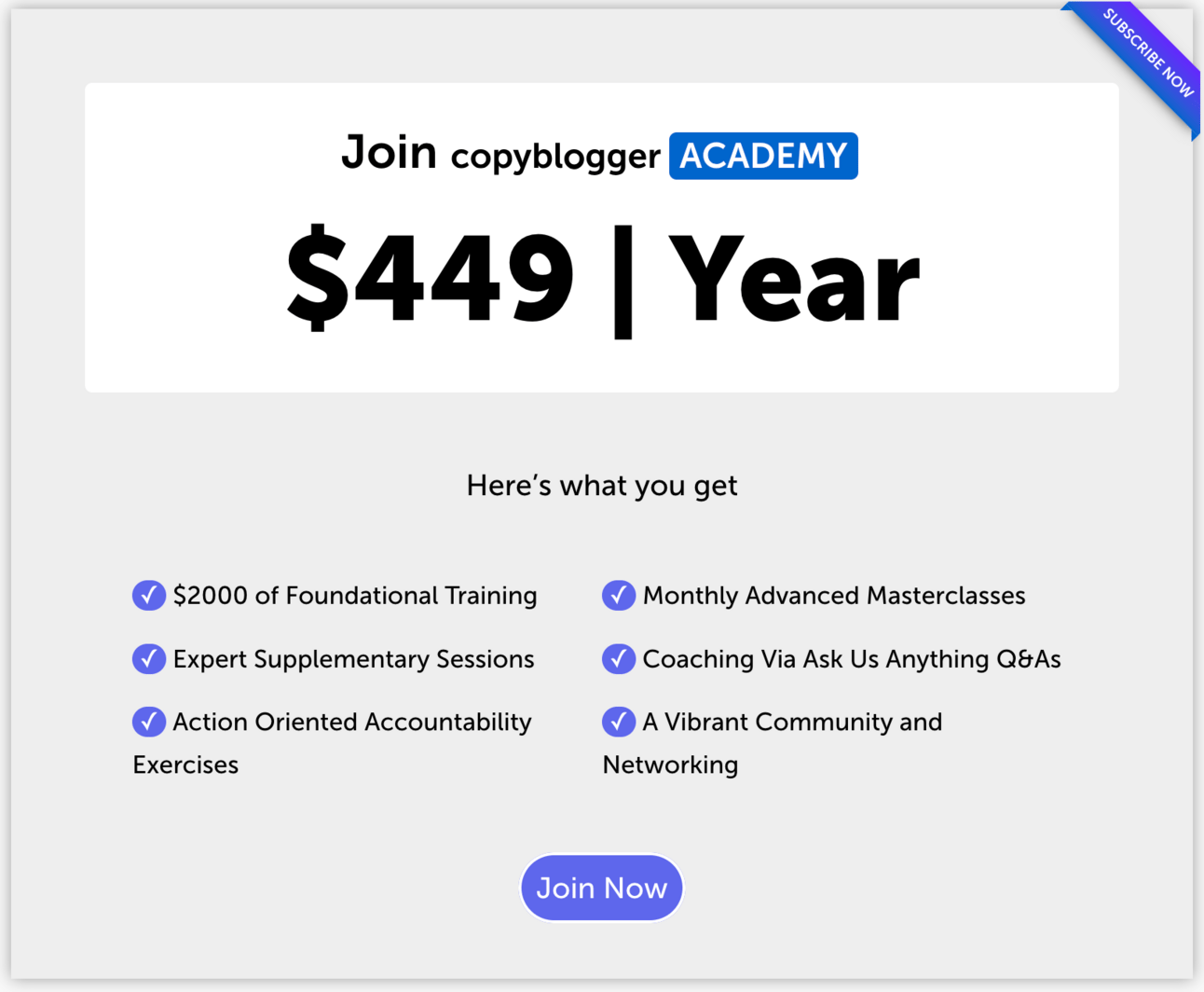
Go through each making notes about what’s available on the market.
If they have free courses or free levels of their community go ahead and sign up.
If there are paid communities that look valuable for your business then sign up.
The more your can immerse yourself in what’s already available in your niche the better.
2. Key Elements and Value
Membership communities all consist of three basic elements:
- Platform
- Content
- Community
The platform is the technology you’ll be using to give people access to your community. We’ll talk about options in Part 3. Lots of people spend far too long on this step but it’s not as important as you think.
The content is what you actually provide in your community. We’ve seen some basic examples above – you could have course material, monthly calls, Q&As etc.
The list of what you can do with your community is really limited by your imagination. We’ll explore this shortly.
Finally, there’s the community itself. Content is how you talk to members. Community is how they talk to one another in a “many to many” fashion:
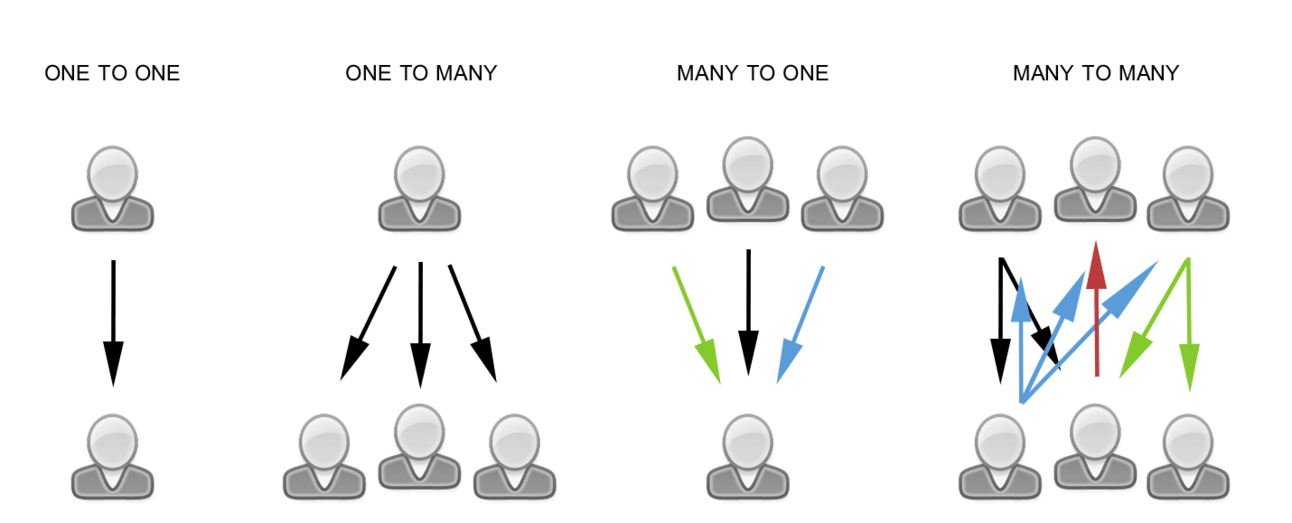
A vibrant community will have this sort of interaction. Ideally you want members talking to and helping each other rather than waiting for you.
This takes work but is possible with the right permissions and encouragements in place.
What’s important here is that all these elements (platform, content and community) are serving one goal: providing value to your members.
As with all our other Playbooks this remains the watchword: value. What value does our business produce for our customers?
Value comes from solving problems and achieving goals that our customers have.
We want to structure our community around this. Here’s a prompt:
Act as an expert membership community creator.
My community is about [topic]
My customers main problems are [problem areas]
What content and community features could I provide to best help my customers? Following on with the copywriting example I’ve used the problem areas of “low revenue, failed launches, procrastination”
💬 Prompt Output:

ChatGPT will take the problem areas and your topic and generate ideas for what you can include in your community.
There’s a lot here though so we’re going to be more focused in the next step.
3. Structuring the community
The brainstorm in the last step led to an awful lot of ideas.
Could we deploy them all? Probably not! Certainly not for an early community.
Instead we want to focus on what’s valuable for members at different stages of their journey.
This prompt will help us refine the value structure of the business. Use this below the previous work for simplicity or otherwise copy/paste in the past work so ChatGPT has context.
Act as an expert membership community creator.
Structure my membership community into:
1. Free guest access level
2. Core level
3. Premium level
Free guest access should preview value and make people keen to join the core level. It should require no ongoing work once content is in place. It should give guests no access to other members.
Core level is where the core content and community sit. The resources required to achieve their goals are present for the members here. They can work through the content at their own speed. There are limited live interactions, one to many, to help their progress.
Premium level is where members can reach their goals fast with premium resources and features. Higher levels of access to me the community leader. Small numbers of elite members.
For each level provide a name and indicative pricing.I’ve used this prompt below the existing chat so that ChatGPT can pull in details about the content and community features we brainstormed.
💬 Prompt Output:
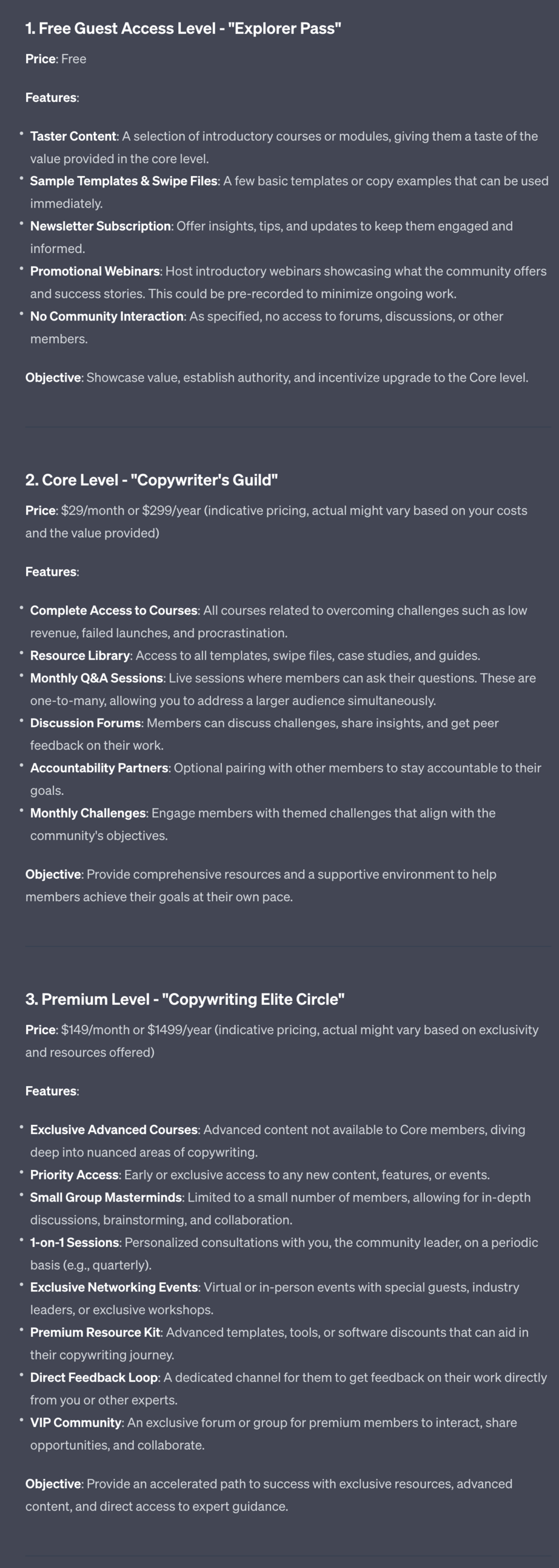
Notice that I’ve locked off community interaction for the free level. The reason for this is reduce spammers getting into the community and being able to message your members. This is optional but I’ve found a useful practice.
The rest of the content and community features have been sorted into 3 levels: free, core and premium. I’ve asked the prompt to also generate some names. These can obviously be changed.
Go through your structure and compare it to what’s already on the market – how does it stack up compared to other communities?
You’re aiming to provide more value and a more realistic route for your members to achieve their goals.
Remove any elements that don’t serve this : if it’s not valuable to the members then drop it.

4. Premium Prompt – Gap analysis
Free Trial – Premium
We’re providing a free trial of the Premium Prompts. Premium Prompts will be available for members only once our community launches. Stay tuned.
Let’s tie together our market research from the first step with our own community structure to look for potential improvements.
Use this prompt, again below all of the existing work.
Act as a community designer
Refer to the list of membership communities researched above.
And to my own 3 level community structure.
1. Find gaps in the market that my community fills. Provide a list.
2. Find gaps in my course that other many other communities fill that I do not. Provide a list.
3. Adjust my community structure with both 1 and 2 in mind to improve its position in the market.
Provide the full revised community structure. 💬 Prompt Output:
The output is complex so here it is split out into pieces.
First the gaps in the market that your community fills:

This gives us some strong marketing hooks we can focus on later. Take advantage of these as they offer greater value to members than the current offerings.
Next, potential gaps in our community:
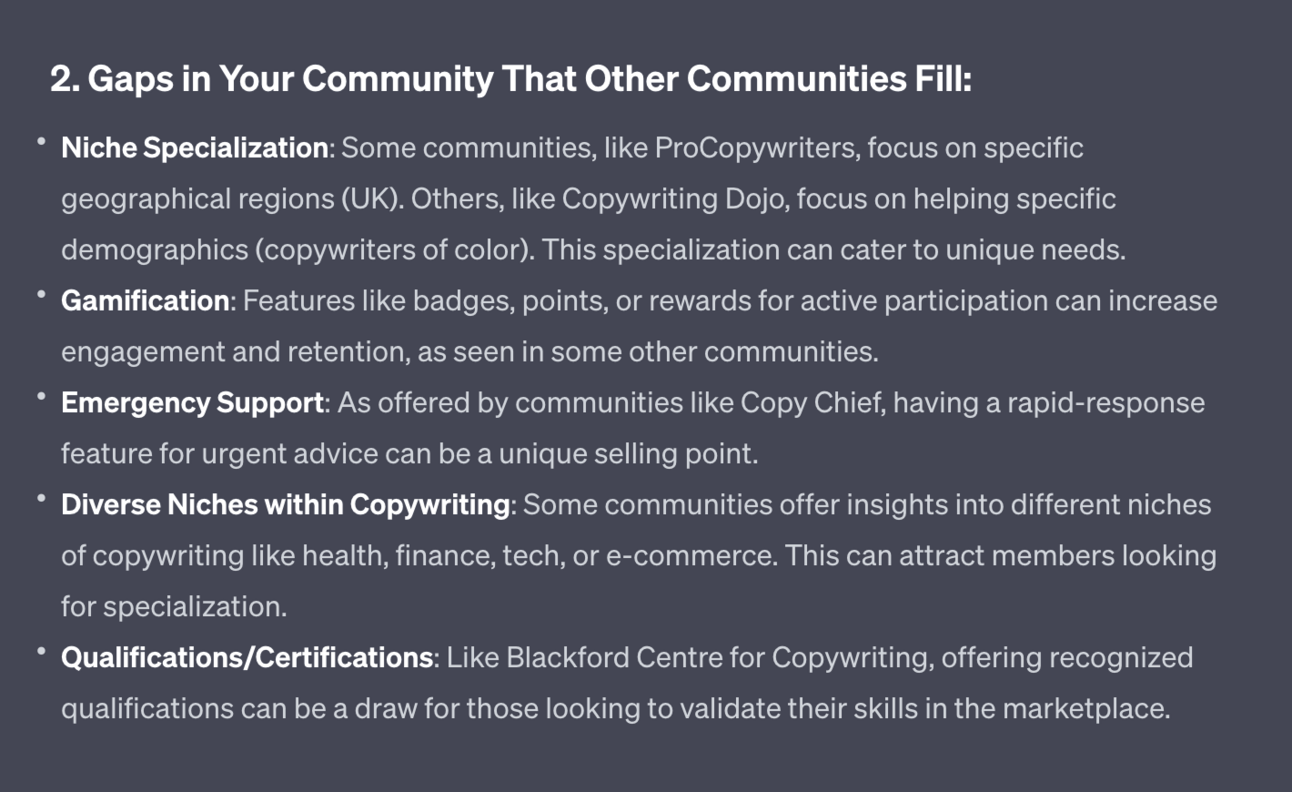
We use this to flag up potential deficiencies that our current community plan has. These are potentials we might want to add.
Finally, a revised version of our community structure that leverages and remedies these points:

This revised structure takes the points above and folds them in.
Again adjust as required. But know also that we’ll be tweaking our structure as we go along with the building so don’t fret about getting it perfect.As I always say done is better than perfect. Keep moving.
Pulling it together
In this Part we’ve built out the basic value structure of the membership community we’ll be building.
In the next Part we’ll be working on our branding and how to make our community more than the sum of its parts.
A reminder of what we’re covering this week :
Part 1: Deciding our community’s value
Part 2: Building the tribe
Part 3: Setting up your membership platform
Part 4: Launching and growing your community
Part 5: Monetising your paid community
